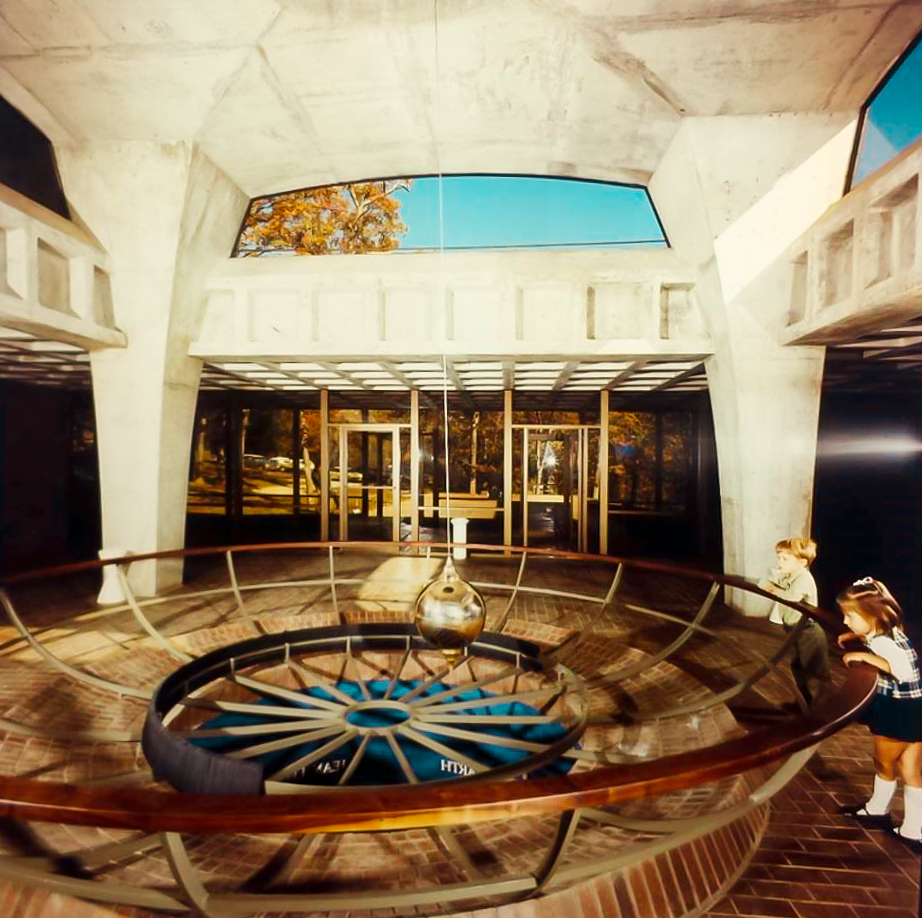Behind-the-Scenes: The Foucault Pendulum
- Tuesday May 12, 2020
- General SCI
One of SCI's most iconic and beloved features, the Foucault (pronounced 'foo koh’) Pendulum is a 235-pound, 17-inch brass ball that demonstrates the rotation of the earth. It hung for more than 30 years in the Science Center of Iowa's former location in Greenwood-Ashworth Park before joining SCI in its downtown location in 2005.
Suspended from the ceiling by a 41-foot cable, the pendulum maintains its swing from a circular electromagnet at the top that makes sure it doesn’t lose energy with each swing. This keeps it swinging indefinitely in a 7.5-foot arc, knocking over two of its 427 steel pegs every five minutes.
The Foucault Pendulum was first devised in 1851 by the French physicist Leon Foucault. Foucault was passionate about making the work of scientists understandable to the public, stating "to contribute usefully to the advance of science, one must sometimes not disdain from undertaking simple verifications."
Foucault created his pendulum to demonstrate a visualization of the Earth’s rotation—something that hadn’t been modeled outside of astronomical calculations and observations.
A typical pendulum swings in straight, fixed line (like the pendulum of a grandfather clock). However, Foucault’s pendulum was not fixed in this way. Instead, he suspended a large iron ball and set it swinging along a North-South line. As spectators watched, they saw it slowly turn in a clockwise direction, moving away from the North-South line and tracing its path in the sand below. This demonstration visualized the Earth’s counter-clockwise rotation.
Does SCI’s pendulum keep time with a 24-hour day? In order for a Foucault Pendulum to complete a full 360-degree rotation in an exact 24-hour period, it would need to be located directly on the North Pole. We can, however, calculate the “Pendulum Day” period of SCI’s Foucault Pendulum (or the amount of time it takes to knock down all of the 427 pegs) using what we know about SCI’s pendulum and applying it to Foucault’s formula. We’ll keep our answer secret but encourage you to Go Beyond and try this physical calculation yourself!
For inspiration, here’s a timelapse video of a full Pendulum Day at SCI compressed into 51 seconds. Observe how the pendulum moves around to knock over each peg—and let us know your guesses on the length of a Pendulum Day at SCI!

